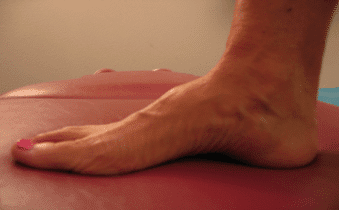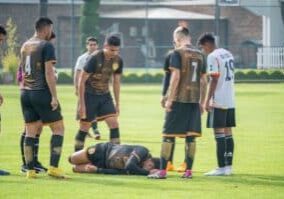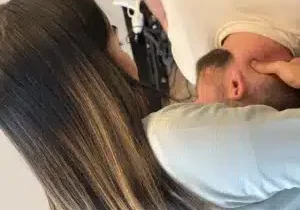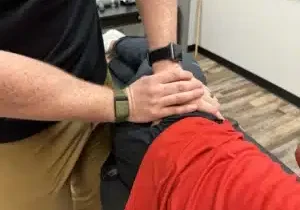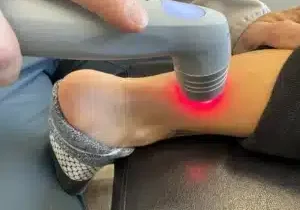The shape of your arch is less important than the movement it creates.
We hear about arches all the time. You’ve been told your feet have flat or high arches and that is causing your foot / shin / knee / low back pain and you need orthotics / shoes / insoles that will fix it. Well, at Head 2 Toe we want to clear something up: The shape of your arch actually means very little. Yep, even you with the crazy high arches.
It’s a gross oversimplification of a very complex system of movement and stability that is the foot. Here’s what does matter: stability (strength) and mobility (movement) of the arch, foot, and lower leg.
Arch Basics
The arches of your feet are so much more than your plantar fascia. Let’s start with the basics. The “arch” most commonly referred to is the medial longitudinal arch, one of three arches we have in each foot. For simplification, we’ll refer to it as the arch in question.
Although much of western medicine has focused its treatment of foot and arch pain on the plantar fascia, there is so much more to it than that! Let’s start with the basics. The arch involves:
- 6 Bones
- 7 Muscles
- 2 Major Bands of Fascia
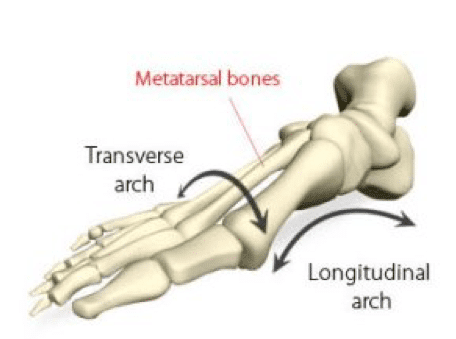
The plantar fascia runs from the knuckles of the toes to the heel, so it runs longitudinally along the foot. But the arch is a 3-dimensional structure, so it has a transverse component to it as well.
We have a transverse arch that crosses the long bones of the foot, called the metatarsal bones. Most often we get a collapse or increase in both arches simultaneously, in a reciprocal nature. Meaning, if one of the arches collapses or heightens, they both do.
The True Heroes of the Arch
Muscles are more important to the arch than we give them credit. The arch is made to expand or collapse when we bear weight on our foot, but it also needs to be able to rebound back into a shortened position. The muscles on the bottom of your foot are meant to support this action through transverse and longitudinal support. When your foot muscles are not properly balanced and supportive, the plantar fascia gets too much stretch on it and cannot rebound properly. When the plantar fascia is at a constant stretch, just like a rope, it will begin to tear and fray over time.
The Myth About Plantar Fasciitis
Any term with “-itis” on the end means that thing is inflamed. Plantar Fasciitis means that the plantar fascia is inflamed. Inflammation is the body’s response to injury. It’s healthy for a certain amount of time but becomes less effective and more harmful thereafter.
Here’s the thing. Most of the time there is NO inflammation of a painful plantar fascia. That’s right, you don’t really have plantar fasciitis.It’s more likely to be fasciosis: irritated plantar fascia without inflammation.
Issues commonly arise from weakness of the muscles supporting the foot. When the muscles aren’t strong enough, they will allow the plantar fascia to take on more weight than it is designed to do. This results in fraying, tearing, and overall irritation of the fascia. Hence, plantar fasciosis. That pain at the front of your heel is the pain of the plantar fascia pulling on the bone because it is being overstretched.
Orthotics
Too often orthotics or shoe inserts are used as the long-term answer. That may work for some people, but not being able to go barefoot or wear the shoes you want is not a solution – it’s avoidance. Orthotics can help in the short term by working as a crutch to relieve the pain while we rehabilitate the foot to a better working condition. Arch pain is best alleviated by correcting the muscular imbalances of the foot through manual therapy and strengthening.
Strengthen Your Feet
Your feet provide a stable platform for your body, but they need to move in the right places and be strong. Here are our top tips to strengthen your feet and relieve foot pain:
- Stop confining your feet.
- Go barefoot! As much as possible.
- Get the right shoes. Our favorite place for this is Super Jock & Jill.
- Learn how to strengthen your feet. (Hint: We are really good at it at Head 2 Toe.)
- Learn how to use a lacrosse ball to work the plantar fascia and muscles of the feet to keep them healthy.
- Learn how to use a foam roller or lacrosse ball to release your calves.
- When you have pain, get the right kind of treatment. What is the right kind of treatment? Well, it has to include a combined approach of soft tissue work to affected areas; strengthening of the feet and kinetic chain; alignment and mobility work when needed to the pelvis, knees, hips and feet; and in some cases laser therapy. (Hint: We do all these things at Head 2 Toe!)
Foot Pros
Are you running out of excuses to ignore your foot pain? Walk on over. We are specialists in lower extremity pain at Head 2 Toe Spine and Sports Therapy. Our skilled clinicians know the body is a sum of moving parts all reliant on each other. We will take you through an orthopedic evaluation to make sure nothing is broken or torn, and then a systematic and through functional evaluation to correctly diagnose and treat your injury. Call us at (425) 776-2936 or visit our New Patients page to learn more.
How Manual Therapy Can Be Your Key to Pain Alleviation and Overall Wellness
Discover the transformative power of manual therapy for pain alleviation and wellness in our blog ‘How Manual Therapy Can Be Your Key to Pain Alleviation and Overall Wellness’.
Read MoreThe Role of Chiropractic Care in Sports Injury Rehab: A Deep Dive
Explore the essential role of chiropractic care in sports injury rehab in our comprehensive blog ‘The Role of Chiropractic Care in Sports Injury Rehab: A Deep Dive’.
Read MoreHow Your Local Chiropractor Can Help You With Back and Neck Pain
Understanding back and neck pain Back and neck pain can be caused by poor posture, muscle strain, injury, or underlying health conditions. The pain may range from mild to severe and can affect your daily activities. Common symptoms include stiffness, muscle spasms, and limited range of motion. In some cases, the pain may radiate to…
Read MoreRehabilitation Services for Sports Injuries: A Comprehensive Guide
Understanding sports injuries and the need for rehabilitation services Injuries during sports are common and can affect athletes of all levels. Rehabilitation services play a crucial role in helping athletes recover from these injuries and get back to their peak performance. With the right guidance and treatment, athletes can regain strength, flexibility, and mobility, ultimately…
Read MoreUnderstanding Posture Therapy: Techniques and Benefits
What is posture therapy? Posture therapy involves exercises and techniques to improve your body alignment and position. It aims to correct postural imbalances and relieve pain and discomfort caused by poor posture. The therapy focuses on strengthening muscles and stretching tight areas to achieve proper alignment of the body. It can also include education on…
Read MoreThe Science Behind Foot Pain Therapy: Understanding the Basics
What causes foot pain? The most common cause of foot pain is wearing ill-fitting or unsupportive footwear. High heels and narrow toe boxes can put excessive pressure on the feet, leading to issues like bunions and corns. Flat feet or high arches can also contribute to foot pain because they affect the alignment and distribution…
Read More

